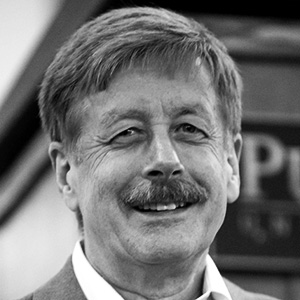Citation

Dr. Martinus Th. “Rien” van Genuchten has made enormous contributions to subsurface water flow and contaminant transport processes across scales. His achievements transformed porous media research through broad-ranging applications in the soil, hydrologic, and environmental science and engineering disciplines. The present state-of-the-art is simply unimaginable without Rien’s pioneering contributions that bridge a range of disciplines involving soil science, hydrology, petroleum and environmental engineering, and Earth system sciences. His research materially transformed our understanding of flow and transport processes in porous media.
First, Rien van Genuchten was key to the introduction of dual-porosity and dual-permeability models in the science and engineering of natural and engineered porous media. His models provided much-improved predictions of observed water flow and solute transport processes by forming a basis for practical as well as advanced theories. Second, he developed novel expressions for the soil hydraulic properties that relate capillary pressure, fluid saturation, and hydraulic conductivity. Because of their attractive mathematical properties and their simplicity, the “van Genuchten equations” are now universally used in numerical simulators of subsurface fluid flow and contaminant transport processes. Third, he pioneered the use of inverse methods in porous media research. He was the first to introduce a computerized nonlinear parameter optimization method for estimating a range of equilibrium and nonequilibrium solute transport parameters from observed data. This work transformed porous media research by allowing a straightforward quantitative interpretation of measured fluid flow and contaminant transport data. Rien contributed to many other areas of near-surface soil, hydrologic, and agricultural research, including numerical and analytical modeling of pesticide and colloid transport, multicomponent geochemical and radionuclide transport, root water uptake, and soil salinization.
Rien’s leadership and dedication to the profession have impacted enormously the careers of numerous graduate students and an endless array of junior, postdoctoral, and other scientists who visited the U.S. Salinity Laboratory in Riverside. He also was unusually active in countless scientific committees. His collaboration across the globe, irrespective of institution, discipline, or geography, is reflected by countless joint publications. He further served as coeditor, deputy editor, or associate editor of nine journals and launched the Vadose Zone Journal dedicated to the science of the near-surface environment. In conclusion, Dr. van Genuchten uniquely transformed hydrologic and porous media research through his many incredible scientific contributions, as well as his unselfish service to the soil, hydrologic, and environmental professions.
—Harry Vereecken, Agrosphere Institute, Jülich, Germany; also at Bonn University, Germany
Response
I am extremely honored to receive the Horton Medal. First of all, I want to thank Harry Vereecken for his persistence in nominating me and Dani Or, Günter Blöschl, and Tissa Illangasekare for supporting the nomination. When I got the news, my immediate reaction was to recall all those who guided my life and career from the very beginning. Most important were my parents, who instilled in me the beauty of the natural environment through their careful management of a small family farm in the Netherlands while allowing me to pursue M.S. studies at Wageningen University. Peter Wierenga then convinced me to do a Ph.D. with him at New Mexico State in the 1970s, which subsequently brought me to George Pinder at Princeton and eventually to Jan van Schilfgaarde at the U.S. Salinity Laboratory in Riverside, Calif. For 30 years I enjoyed there enormous freedom to pursue whatever studies I felt were important to better understand and numerically model the fate and subsurface transport of agricultural and other contaminants.
My stay at the Salinity Laboratory was absolutely amazing. I could work with a large number of colleagues and visitors from all over the world. Our research involved laboratory- and field-scale experimentation, development of software such as the STANMOD and HYDRUS codes, and their application to a range of agricultural, hydrologic, and environmental problems. Those studies did lead to some 500 publications, with a similar number of authors and coauthors. I am grateful that I could continue these studies later when I moved to Brazil in 2008 and then part-time also to the Netherlands.
Receiving the Horton Medal made me reflect on the many environmental and other challenges facing this planet and its habitants. This includes our problems with soil, water, and air pollution; limited freshwater resources; biodiversity; and global change. Yes, there is great urgency to address these problems. At the same time, we are fortunate that our understanding of the underlying physical and biogeochemical processes has never been better than today, as well as of various socioeconomic and other aspects. We are witnessing a revolution in terms of increasing our knowledge of these processes and how to convert this knowledge into practical solutions. As such, I dedicate the Horton Medal to those trying to apply all of what we know to actual field problems, thereby diminishing the gap between the state of the art and the state of the practice.
—Rien van Genuchten, Department of Nuclear Engineering, Federal University of Rio de Janeiro, Brazil
Citation:
(2021), Rien van Genuchten receives 2020 Robert E. Horton Medal, Eos, 102, https://doi.org/10.1029/2021EO158490. Published on 20 May 2021.
Text © 2021. AGU. CC BY-NC-ND 3.0
Except where otherwise noted, images are subject to copyright. Any reuse without express permission from the copyright owner is prohibited.
